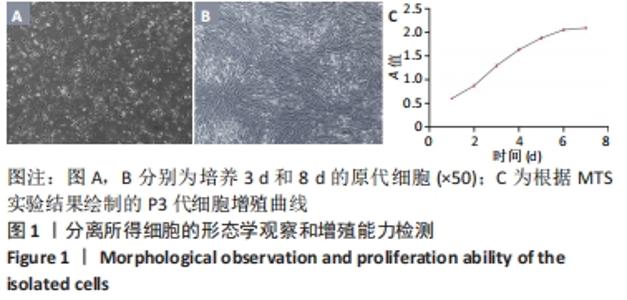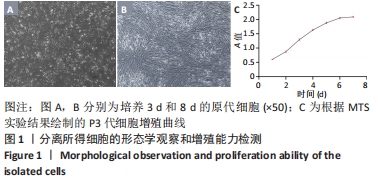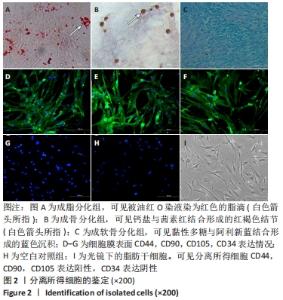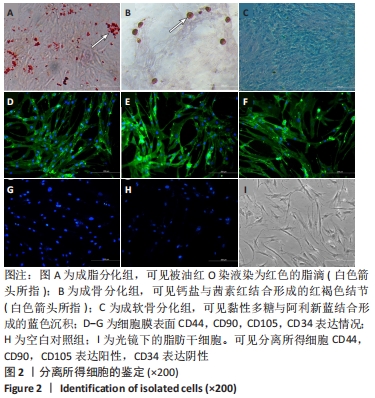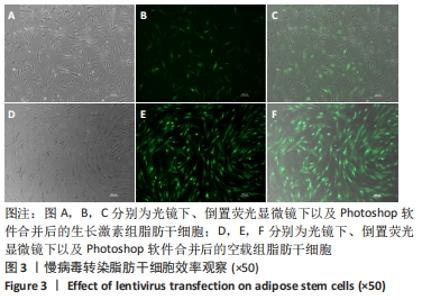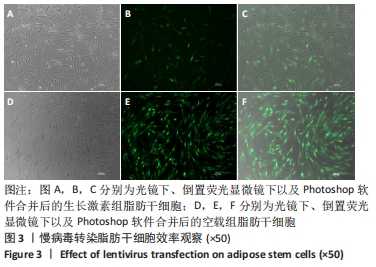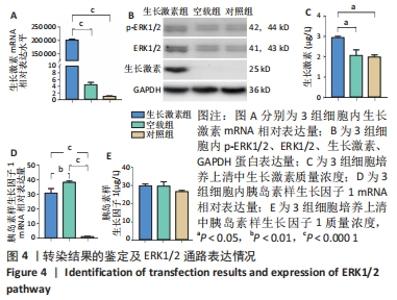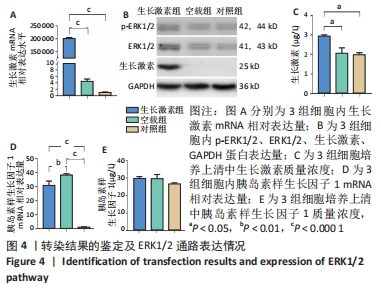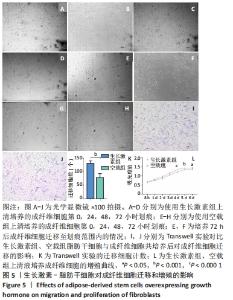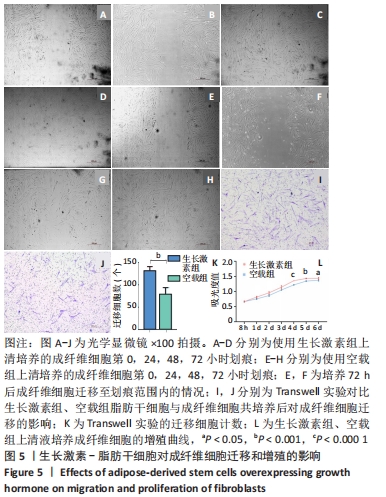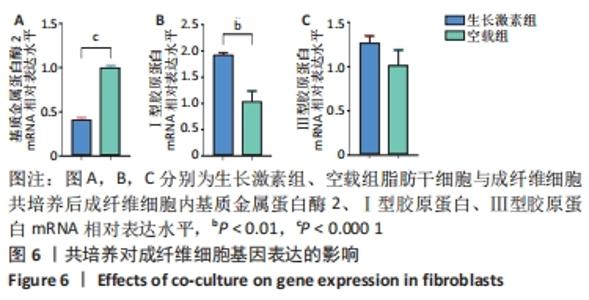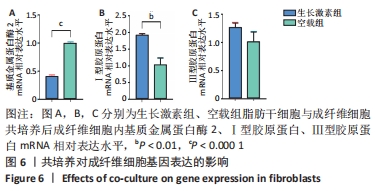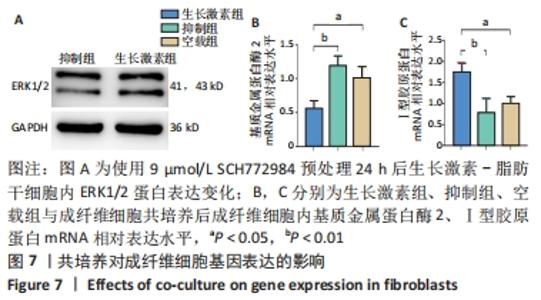[1] SHARMA P, KUMAR A, DEY AD, et al. Stem cells and growth factors-based delivery approaches for chronic wound repair and regeneration: A promise to heal from within. Life Sci. 2021;268:118932.
[2] 林志骁,张玉恒,黄容,等. 负载大鼠表皮干细胞的聚己内酯-乙酸纤维素纳米纤维支架对大鼠全层皮肤缺损创面愈合的影响及其机制[J]. 中华烧伤杂志,2021,37(5):460-468.
[3] HUANG S, HU Z, WANG P, et al. Rat epidermal stem cells promote the angiogenesis of full-thickness wounds. Stem Cell Res Ther. 2020;11(1):344.
[4] BARRERA JA, TROTSYUK AA, MAAN ZN, et al. Adipose-Derived Stromal Cells Seeded in Pullulan-Collagen Hydrogels Improve Healing in Murine Burns. Tissue Eng Part A. 2021;27(11-12):844-856.
[5] CAPELLA-MONSONÍS H, DE PIERI A, PEIXOTO R, et al. Extracellular matrix-based biomaterials as adipose-derived stem cell delivery vehicles in wound healing: a comparative study between a collagen scaffold and two xenografts. Stem Cell Res Ther. 2020;11(1):510.
[6] ZHANG Z, LI Z, LI Y, et al. Sodium alginate/collagen hydrogel loaded with human umbilical cord mesenchymal stem cells promotes wound healing and skin remodeling. Cell Tissue Res. 2021;383(2):809-821.
[7] XU H, HUANG S, WANG J, et al. Enhanced cutaneous wound healing by functional injectable thermo-sensitive chitosan-based hydrogel encapsulated human umbilical cord-mesenchymal stem cells. Int J Biol Macromol. 2019;137:433-441.
[8] ALAPURE BV, LU Y, HE M, et al. Accelerate Healing of Severe Burn Wounds by Mouse Bone Marrow Mesenchymal Stem Cell-Seeded Biodegradable Hydrogel Scaffold Synthesized from Arginine-Based Poly(ester amide) and Chitosan. Stem Cells Dev. 2018;27(23):1605-1620.
[9] YANG Z, HE C, HE J, et al. Curcumin-mediated bone marrow mesenchymal stem cell sheets create a favorable immune microenvironment for adult full-thickness cutaneous wound healing. Stem Cell Res Ther. 2018;9(1):21.
[10] GOODARZI P, ALAVI-MOGHADAM S, SARVARI M, et al. Adipose Tissue-Derived Stromal Cells for Wound Healing. Adv Exp Med Biol. 2018;1119:133-149.
[11] 田方圆,吴斌,徐珽,等. 重组人生长激素治疗成年重度烧伤患者有效性和安全性的系统评价[J]. 中华烧伤杂志,2017,33(9):568-573.
[12] 赵国凯,刘小龙. 生长激素治疗糖尿病足溃疡的研究进展[J]. 中华烧伤杂志,2020,36(2):147-149.
[13] CRISTÓBAL L, DE LOS REYES N, ORTEGA MA, et al. Local Growth Hormone Therapy for Pressure Ulcer Healing on a Human Skin Mouse Model. Int J Mol Sci. 2019;20(17):4157.
[14] 梁敏,计鹏. 重症烧伤患者应用重组人生长激素治疗对相关指标及治疗效果的影响[J]. 中国医药,2019,14(9):1366-1369.
[15] 张铁凝,李全,巴特,等.富血小板血浆对人慢性难愈创面肉芽组织成纤维细胞体外增殖和迁移的影响[J].广西医学,2021(2):205-208.
[16] 王志敏. 过表达hTβ4的ADSC复合羊皮脱细胞真皮基质对创面愈合影响的研究[D]. 呼和浩特:内蒙古大学,2018.
[17] VISWANATHAN S, SHI Y, GALIPEAU J, et al. Mesenchymal stem versus stromal cells: International Society for Cell & Gene Therapy (ISCT®) Mesenchymal Stromal Cell committee position statement on nomenclature. Cytotherapy. 2019;21(10):1019-1024.
[18] 张仔昂,鲁峰. 脂肪组织工程中生物支架材料的研究进展[J]. 中国美容整形外科杂志,2018,29(4):249-251后插6.
[19] LAMSFUS-CALLE A, DANIEL-MORENO A, UREÑA-BAILÉN G, et al. Hematopoietic stem cell gene therapy: The optimal use of lentivirus and gene editing approaches. Blood Rev. 2020;40:100641.
[20] MARIIA K, ARIF M, SHI J, et al. Novel chitosan-ulvan hydrogel reinforcement by cellulose nanocrystals with epidermal growth factor for enhanced wound healing: In vitro and in vivo analysis. Int J Biol Macromol. 2021;183:435-446.
[21] ABDELHAKIM M, LIN X, OGAWA R. The Japanese Experience with Basic Fibroblast Growth Factor in Cutaneous Wound Management and Scar Prevention: A Systematic Review of Clinical and Biological Aspects. Dermatol Ther (Heidelb). 2020;10(4):569-587.
[22] TAKTAK-BENAMAR A, MORJEN M, BEN MABROUK H, et al. Expression, purification and functionality of bioactive recombinant human vascular endothelial growth factor VEGF(165) in E. coli. AMB Express. 2017;7(1):33.
[23] SZALECKI M, MALINOWSKA A, PROKOP-PIOTRKOWSKA M, et al. Interactions between the growth hormone and cytokines - A review. Adv Med Sci. 2018; 63(2):285-289.
[24] 尚涛,任艳丽,李静,等. 重组人生长激素治疗前后糖尿病足患者血清中IGF-1、IGFBP-3和血浆蛋白水平的变化及其意义[J]. 吉林大学学报(医学版),2017,43(6):1209-1214.
[25] LAVOIE H, GAGNON J, THERRIEN M. ERK signalling: a master regulator of cell behaviour, life and fate. Nat Rev Mol Cell Biol. 2020;21(10):607-632.
[26] XU J, KEETON AB, FRANKLIN JL, et al. Insulin enhances growth hormone induction of the MEK/ERK signaling pathway. J Biol Chem. 2006;281(2):982-992.
[27] 李江.胰岛素样生长因子-1的研究进展[J]. 国际检验医学杂志,2013, 34(7):848-850.
[28] JÓZEFIAK A, LARSKA M, POMORSKA-MÓL M, et al. The IGF-1 Signaling Pathway in Viral Infections. Viruses. 2021;13(8):1488.
[29] 李金玺,刘旭盛,唐辉,等. 部分创面外用抗菌药物与成纤维细胞生长因子2、表皮生长因子、重组人生长激素对成纤维细胞生物学特性影响的实验研究[J]. 中华烧伤杂志,2006,22(1):33-37.
[30] KUIVANIEMI H, TROMP G. Type III collagen (COL3A1): Gene and protein structure, tissue distribution, and associated diseases. Gene. 2019;707: 151-171.
[31] AZIMI M, KHODABANDEH M, DEEZAGI A, et al. Impact of the Transfersome Delivered Human Growth Hormone on the Dermal Fibroblast Cells. Curr Pharm Biotechnol. 2019;20(14):1194-1202.
[32] 高颖,蔡定芳. 基质金属蛋白酶-9与炎症反应研究进展[J]. 中国病理生理杂志,2003,19(8):1133-1136.
|
